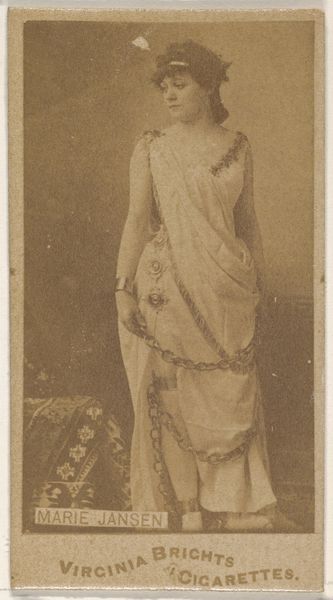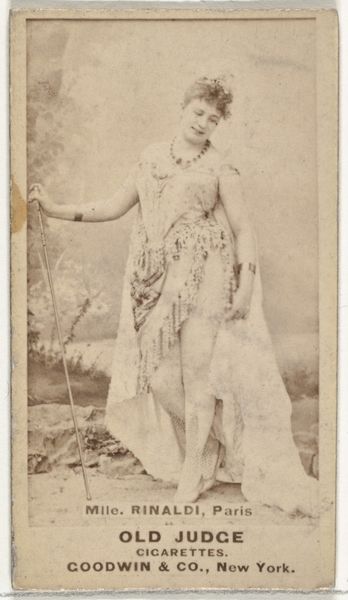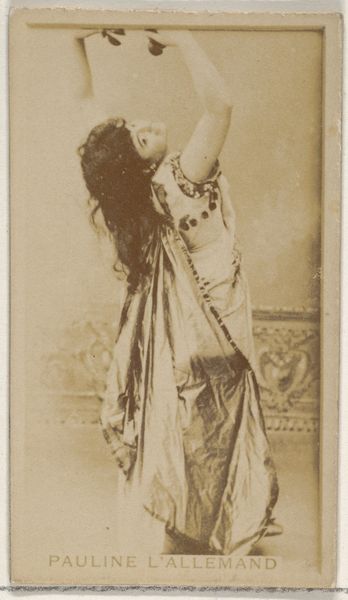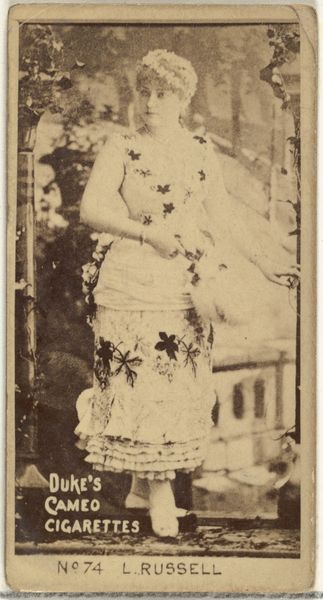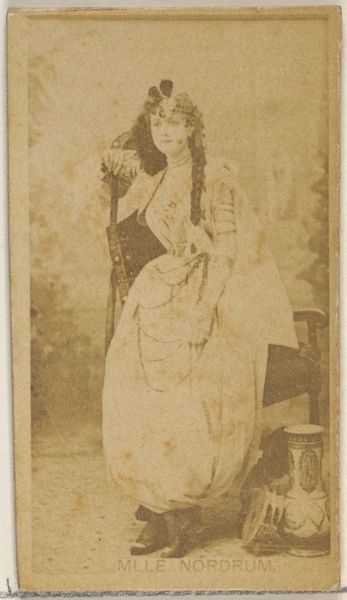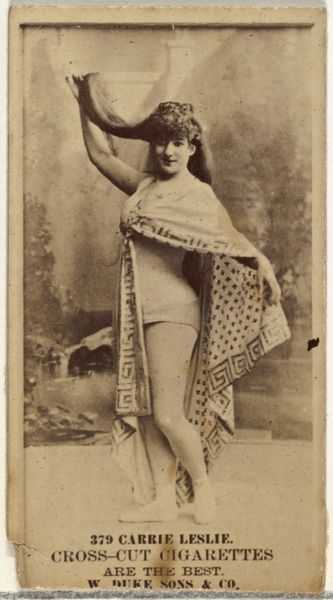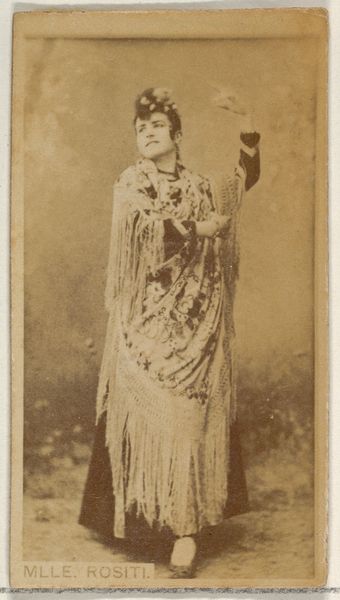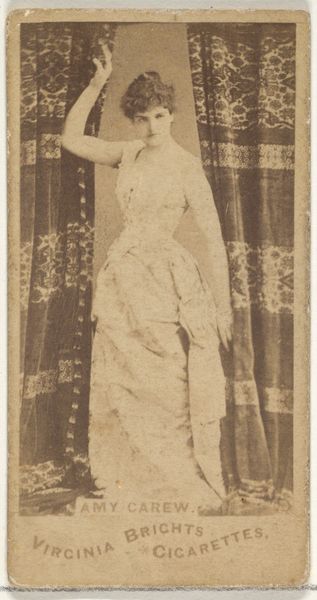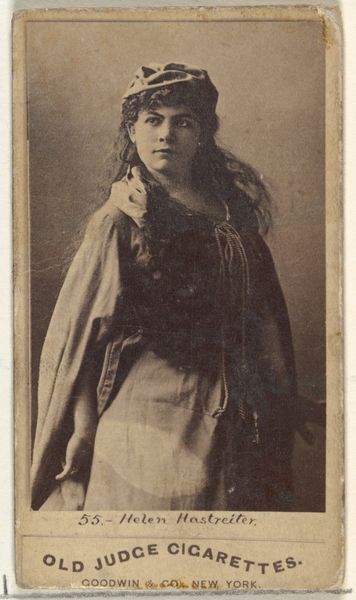
Card Number 384, Emily Fenn, from the Actors and Actresses series (N145-3) issued by Duke Sons & Co. to promote Cross Cut Cigarettes 1880s
0:00
0:00
drawing, print, photography
#
portrait
#
drawing
# print
#
photography
#
realism
Dimensions: Sheet: 2 11/16 × 1 3/8 in. (6.8 × 3.5 cm)
Copyright: Public Domain
Curator: What catches your eye about this piece? Editor: Well, this is "Card Number 384, Emily Fenn," part of an "Actors and Actresses" series from the 1880s, a promotional item for Cross Cut Cigarettes. I find it fascinating how commercial interests intersected with artistry in this period. The woman, presumably an actress, looks like she’s mid-performance or portrait sitting with an apple in her hands. What can we make of these cigarette cards today, beyond just advertisements? Curator: Exactly! These cards reveal the cultural landscape of the late 19th century. Advertising moved beyond simple announcements to crafting aspirational lifestyles and connecting celebrities with products. What statement do you think the producers were making in promoting these items through art? Editor: Hmm, interesting question. Maybe they were trying to legitimize the cigarette industry by associating it with the sophistication of the stage? Suggesting that buying their cigarettes was somehow connected to culture and beauty? Curator: Precisely. Consider also the distribution—inserted into cigarette packs, these cards democratized access to imagery, albeit in a capitalist driven way. These photographs entered homes and were actively collected. Do you think such distribution methods shaped taste? Editor: Absolutely. By becoming so readily available, cigarette companies really made advertisements ubiquitous to society. Collecting photos was perhaps accessible for new groups of people. I suppose these trading cards highlight a lot of interweaving networks within society. Curator: That’s right. Examining these cards provides insights into the social fabric, the performance of identity, and the strategies industries used to embed themselves into the everyday lives of people. We can begin to examine the early visual language of consumer culture. Editor: I hadn't thought of it that way, but it's amazing how much a seemingly simple advertisement can tell us about the social and political dynamics of its time. Thanks, Curator! Curator: My pleasure! It's all about seeing art as a reflection, and a creator, of the society it inhabits.
Comments
No comments
Be the first to comment and join the conversation on the ultimate creative platform.
